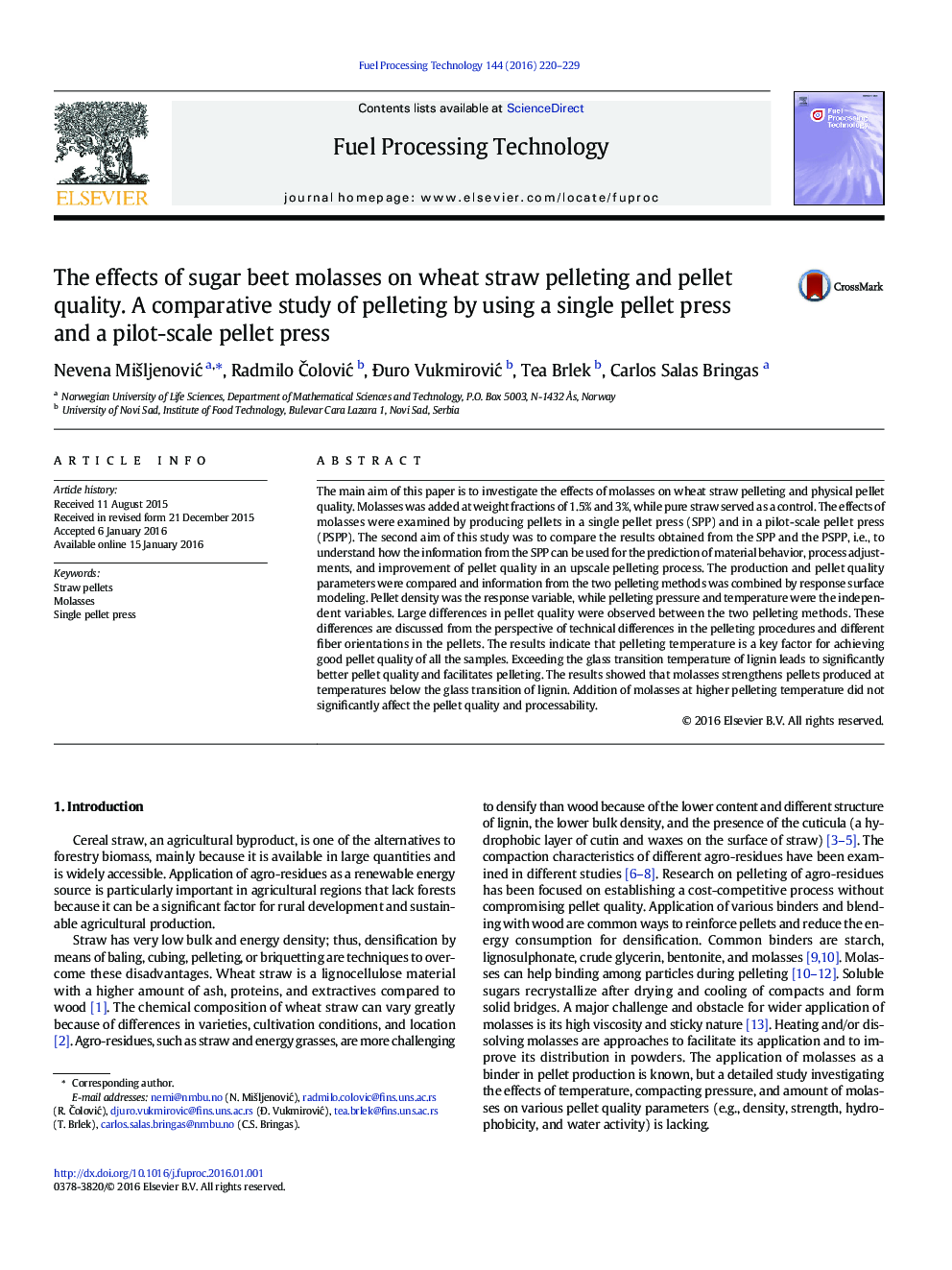| کد مقاله | کد نشریه | سال انتشار | مقاله انگلیسی | نسخه تمام متن |
|---|---|---|---|---|
| 209277 | 461664 | 2016 | 10 صفحه PDF | دانلود رایگان |
• Straw pellets with added molasses were produced by two pelleting methods.
• Molasses as a binder is redundant for pelleting at temperatures higher than the Tg of lignin.
• Single pellet press (SPP) and pilot scale pellet press (PSPP) were compared.
• Bending test is suitable for the comparison of strengths of SPP and PSPP pellets.
• Surface hydrophobicity was assessed by measuring contact angle of a water drop.
The main aim of this paper is to investigate the effects of molasses on wheat straw pelleting and physical pellet quality. Molasses was added at weight fractions of 1.5% and 3%, while pure straw served as a control. The effects of molasses were examined by producing pellets in a single pellet press (SPP) and in a pilot-scale pellet press (PSPP). The second aim of this study was to compare the results obtained from the SPP and the PSPP, i.e., to understand how the information from the SPP can be used for the prediction of material behavior, process adjustments, and improvement of pellet quality in an upscale pelleting process. The production and pellet quality parameters were compared and information from the two pelleting methods was combined by response surface modeling. Pellet density was the response variable, while pelleting pressure and temperature were the independent variables. Large differences in pellet quality were observed between the two pelleting methods. These differences are discussed from the perspective of technical differences in the pelleting procedures and different fiber orientations in the pellets. The results indicate that pelleting temperature is a key factor for achieving good pellet quality of all the samples. Exceeding the glass transition temperature of lignin leads to significantly better pellet quality and facilitates pelleting. The results showed that molasses strengthens pellets produced at temperatures below the glass transition of lignin. Addition of molasses at higher pelleting temperature did not significantly affect the pellet quality and processability.
Journal: Fuel Processing Technology - Volume 144, April 2016, Pages 220–229
